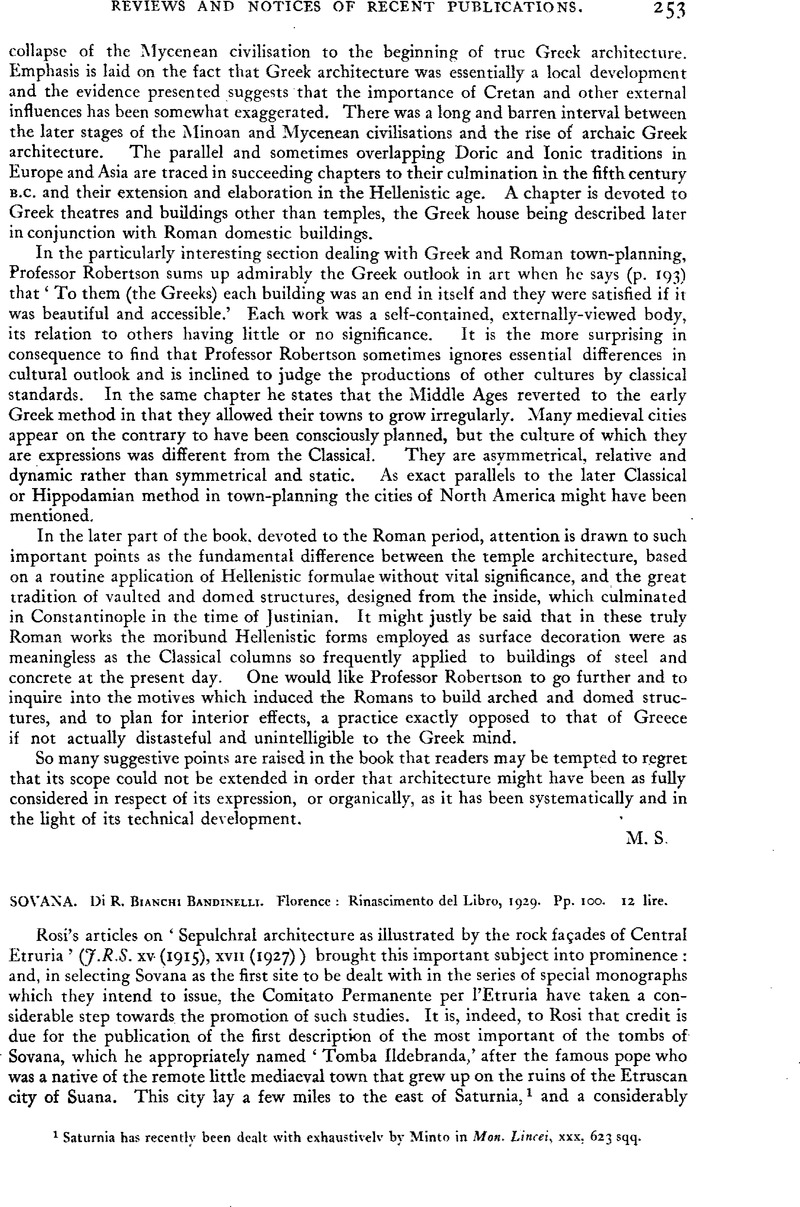No CrossRef data available.
Article contents
Sovana. Di R. Bianchi Bandinelli. Florence: Rinascimento del Libro, 1929. Pp. 100. 12 lire.
Published online by Cambridge University Press: 24 September 2012
Abstract

- Type
- Reviews and Notices of Recent Publications
- Information
- Copyright
- Copyright © T. A. 1929. Exclusive Licence to Publish: The Society for the Promotion of Roman Studies
References
page 253 note 1 Saturnia has recently been dealt with exhaustively by Minto, in Mon. Lincei, XXX. 623Google Scholar sqq.
page 254 note 1 Bandinelli, Bianchi agrees with the remarks on the subject in Röm. Mitt, XXX (1915), 190Google Scholar sqq.: cf. Studi Etruschi, iii, 180, 455.
page 254 note 2 Compare the text (pp. 27, 29) with note 26 (p. 125) : and note that Bianchi Bandinelli was himself responsible for sheet 129 of the Archaeological Map of Italy, I: 100,000.
page 254 note 3 When, in company with Fell and Rosi, I walked from Tuscania to Valentano, where some authorities place Maternum, and past the Lago di Mezzano to Pitigliano and Sovana in 1923, we were unable to discover any traces of any ancient road: so that I cannot offer any opinion as to the real or probable site of Maternum. Owing to the nature of the country, no trace of ancient roads seems to be preserved except within a radius of a mile or two from Saturnia, which stands on limestone.
page 254 note 4 J.R.S. cit.: Architecture of Greece and Rome, pl. vii. There is also a good deal of information to be found in his notebooks, which, with the finished drawings, are preserved in the Department of Prints and Drawings in the British Museum.
page 254 note 5 Eighteen specimen pieces are in the Archaeological Museum at Florence (p. 36 and pl. XXX).
page 255 note 1 Durm, Baukunst in Italien, ed. 2, p. 75, fig. 79. Anderson, Spiers and Ashby, Architecture of Greece and Rome, p. 14, fig. 4; a good photograph is given in the present work (pl. xxxvii, fig. a).


